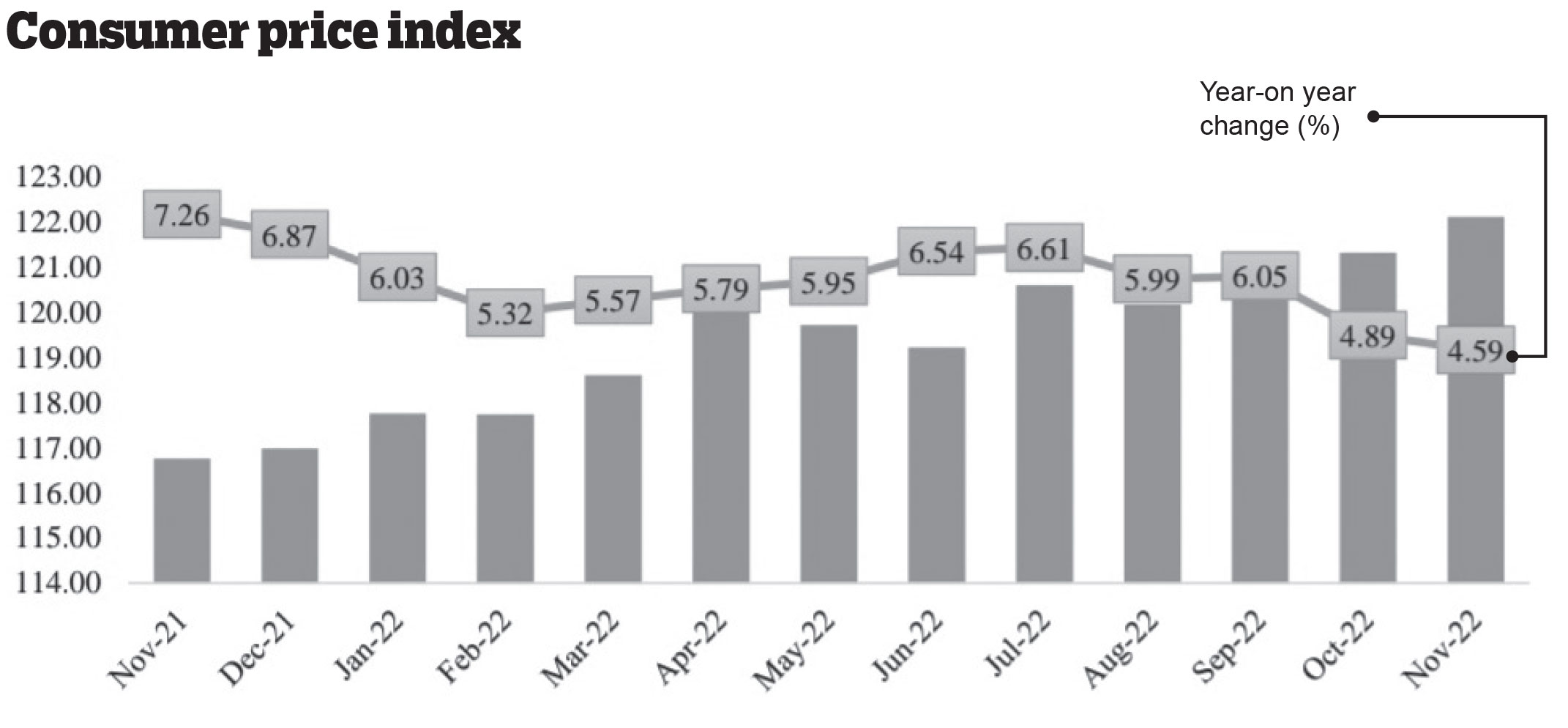…records a 28-month low, indicating to cool-down further
Thukten Zangpo
Despite the price of goods and services becoming costlier by 4.59 percent in November last year compared to the same month in 2021, it recorded a drop to a 28-month low.
Inflation rate measured in consumer price index (CPI) is a decrease in the purchasing power of money, reflected in a general increase in the prices of goods and services in an economy. Ngultrum 100 in November last year is worth only Nu 60 at December 2012 prices.
The inflation rate was lower than the Royal Monetary Authority’s (RMA) upper threshold of 6 percent. However, it is still higher than the pre-pandemic level of 2.34 percent in November 2019.
The inflation was reported at 4.54 percent in June 2020 from the same month the previous year, the National Statistics Bureau (NSB) figure shows. Since then it has seen an upward trend.
As the pandemic continued to impact the global supply chain, the inflation rose to 7.52 percent and 7.26 percent in November 2020 and 2021 respectively.
 Although the pandemic began to ease early this year, Russia invaded Ukraine in February, which sent global food and commodity prices soaring.
Although the pandemic began to ease early this year, Russia invaded Ukraine in February, which sent global food and commodity prices soaring.
Increases in both food and non-food prices by 2.26 percent and 6.62 percent respectively in November last year contributed to inflation, the NSB figure shows.
The transport sector that accounted for 39 percent of the overall inflation saw the highest, 11.8 percent increase.
Clothing and footwear having a 10 percent contribution saw the second-highest increase at 7.28 percent.
Food and non-alcoholic beverages saw a 2.24 percent increase. It contributed to 22 percent of the overall inflation.
For Bhutan, higher volatility in fuel prices and the difficult geographical terrain for the transportation of both food and non-food consumer items are largely influenced by changes in fuel prices.
The price of petrol and diesel was Nu 82.99 and Nu 75.82 respectively in Thimphu in November 2021. The Russia-Ukraine war saw an increase in diesel price to Nu 104.57 and petrol price was Nu 81.99 respectively as of November last year.
According to the RMA, if the fuel price increases by 10 percent and other factors remain constant, the total increase in inflation will be 45.9 percent after three months. This indicates that fuel prices have a huge impact on inflation.
Bhutan does not produce fossil fuel, and the fuel import is met from India. India also imports 80 percent of its total fuel consumption, largely from middle-east.
The global fuel price is based on USD, and any depreciation of INR against USD has a direct impact on fuel prices in Bhutan. Also, fuel price is impacted by fuel production prices in the global market and India.
Since 80 percent of Bhutan’s import is associated with India, the fall in India’s annual inflation rate is expected to fall in Bhutan’s domestic inflation.
India’s CPI cooled to a nine-month low of 6.4 percent in November last year.
It was reported that India’s inflation would continue to fall on account of lower food prices especially vegetables, stable energy and gasoline prices.
India’s central bank, the Reserve Bank of India estimated the annual inflation cooling to 5.9 percent in January-March and 5 percent in April-June this year but is set to rise to 5.4 percent in the subsequent months.


